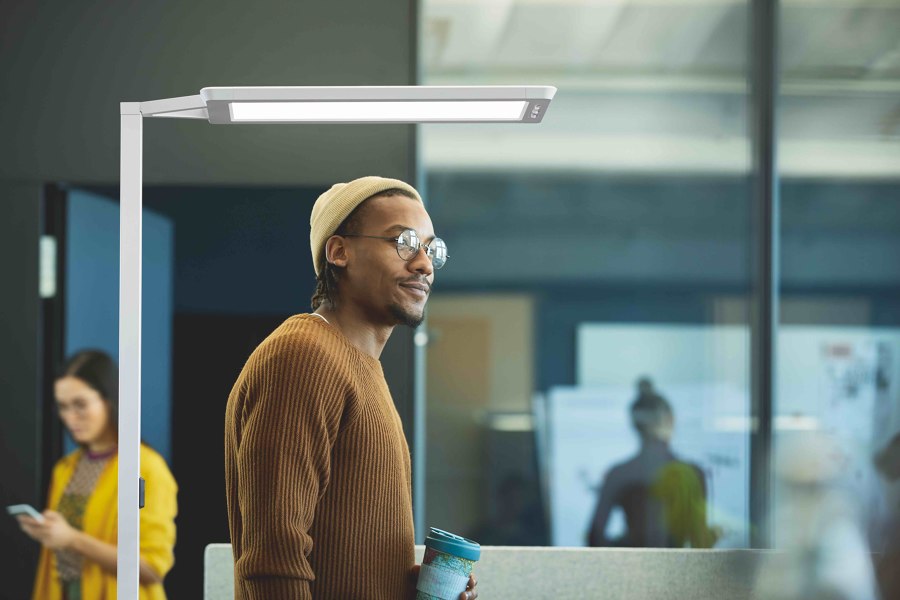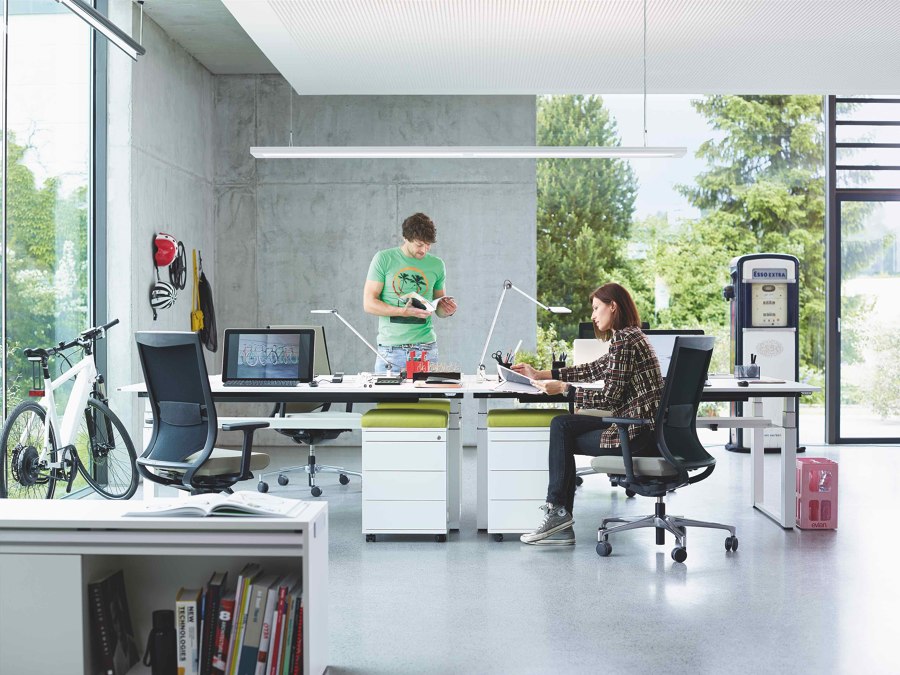Light is life: Human Centric Light from Waldmann
Storia del Marchio di Markus Hieke
Villingen-Schwenningen, Germania
15.05.23
The name Waldmann has long been associated with the principle of biodynamic lighting in healthcare, office and industrial environments – what's new is the company's orientation towards more circular principles ...
Light is a decisive factor for well-being and health in the workplace. Waldmann's ergonomic Para.mi is bright, glare-free, dimmable, continuously movable and emission-free

Light is a decisive factor for well-being and health in the workplace. Waldmann's ergonomic Para.mi is bright, glare-free, dimmable, continuously movable and emission-free
×The optimal office-interior setup is a subject of great debate. Ask interior designers, HR managers or employees about the perfect office and you can expect to get as many different answers as there are corporate identities, or even individuals – because they are all mirrored in today's workplaces. Less debatable, however, is the role of good lighting, which is crucial for well-being and health – a factor that Waldmann, the lighting specialist based in the south of Germany, places at the centre of its mission.
Para.mi provides pleasant, individually adjustable extra light in the workplace
Natural light for indoors
Many have long known the name Waldmann as one synonymous with the term ‘biodynamic lighting’. This refers to light that varies its colour temperature and light intensity over the course of the day in order to offer the most natural lighting conditions possible to us. Because the fact is, we were not really designed for working indoors; for evolutionary reasons, our biorhythms are oriented to the position of the sun and the colour temperatures that change with it.
What many people don't realise is how much illuminance also influences us
Awareness of the effect of warm-white and cool light on our day-night rhythm has been growing steadily in recent years. What many people do not realise is how much illuminance also influences us. With artificial lighting, for example, we are surrounded by an average of 500 lux. In comparison, daylight still presents us with a good 10,000 lux, even on dull days. Conversely, our inner clock, the circadian rhythm, is of course also influenced by darkness in the evening, so it would be too simplistic to distinguish here between light and dark alone.
Waldmann's biodynamic indoor office lighting orients itself towards the cycle of natural daylight throughout the course of the day

Waldmann's biodynamic indoor office lighting orients itself towards the cycle of natural daylight throughout the course of the day
×Focus on people
For almost twenty years, Waldmann has been implementing this knowledge in the form of biodynamic lighting systems – also known as Human Centric Lighting – in which people and their natural lighting needs take centre stage. Of course, Waldmann is not the only brand specialising in this area, but the company is one of the pioneers in the field of biologically effective lighting and, in addition to many years of experience with its VTL (Visual Timing Light) lighting management system, can also look back on numerous references of various kinds.
Waldmann initially started out with the topic of Human Centric Lighting in relation to the healthcare industry, but from 2014, the portfolio was expanded to also include office lighting. Since 2019, the brand has also been equipping rooms – or should we say halls – in industrial environments with biodynamic lighting, where the conditions are many times more challenging due to complex requirements including those related to things like height, dust or even special working time models. Waldmann set itself the goal of helping to compensate for the loss of daylight in interior spaces. And, neither should users of the window seat get too complacent – when filtered through multiple glazing, the natural daylight spectrum can change, and thus also upset, the body clock.
Floor lamps from Waldmann's Yara series support our natural biorhythms and measure ambient elements such as air, temperature and volume

Floor lamps from Waldmann's Yara series support our natural biorhythms and measure ambient elements such as air, temperature and volume
×Circularity in more ways than one
Waldmann's VTL solutions deliver motivating light to the workplace. Inspired by the dynamics of natural daylight, this, for example, takes the form of free-standing luminaires from the Yara range, or free-standing, pendant and surface-mounted desk luminaires from the Lavigo collection – the first office luminaire series worldwide to be awarded a bronze Cradle to Cradle® certificate. This is equally important to Waldmann who keep a keen eye on material cycles and resource consumption – thus taking nature as a model in this sense, also.
‘Cradle to Cradle requirements have become a design standard for us. Even if we are not aiming for certification’
At the end of a product's life cycle, it should be possible to return as many components as possible to the material cycle or at least make them environmentally safe. The company has now imposed Cradle to Cradle principles on every product it makes. ‘It is the way we design and manufacture our products. Cradle to Cradle requirements have become a design standard for us. Even if we are not aiming for certification,’ emphasises Christoph Waldmann, the company's fourth-generation managing director.
Waldmann's Lavigo lamp is the world's first floor lamp certified according to the Cradle to Cradle model. Yara wass also developed and is produced according to these principles

Waldmann's Lavigo lamp is the world's first floor lamp certified according to the Cradle to Cradle model. Yara wass also developed and is produced according to these principles
×For Waldmann, innovation also means combining the necessary with the useful. Users are therefore free to choose whether they prefer to control their luminaire manually via a control element or via a DALI light management system. Electricity can be saved with the help of integrated daylight and presence sensors. And if you choose the extended version of the Yara free-standing luminaire or a separate Kirk ceiling sensor, these provide information on air quality, noise level and room temperature. In addition, several products from the portfolio are emission-tested according to DIN EN 16516 to ensure that no hazardous substances are released into the air of room. This is the holistic view from Waldmann, one which combines emotional well-being with aspects of ergonomics and health as well as sustainability.
© Architonic
Head to the Architonic Magazine for more insights on the latest products, trends and practices in architecture and design.














